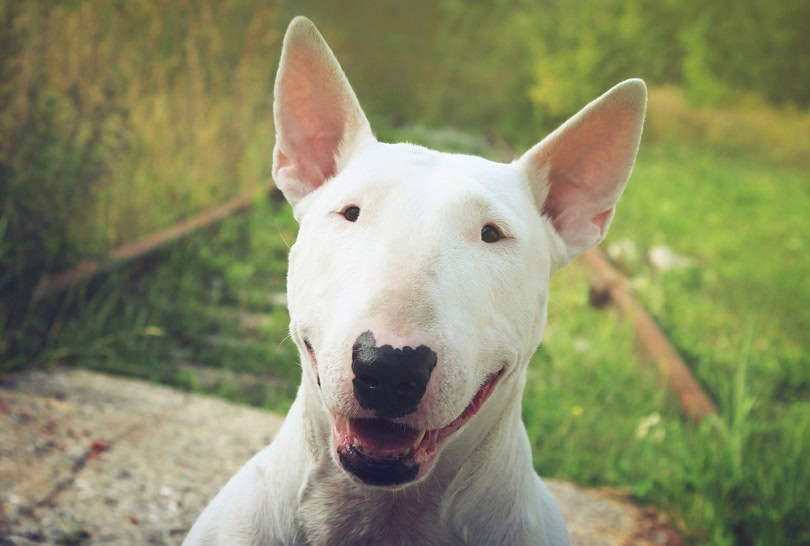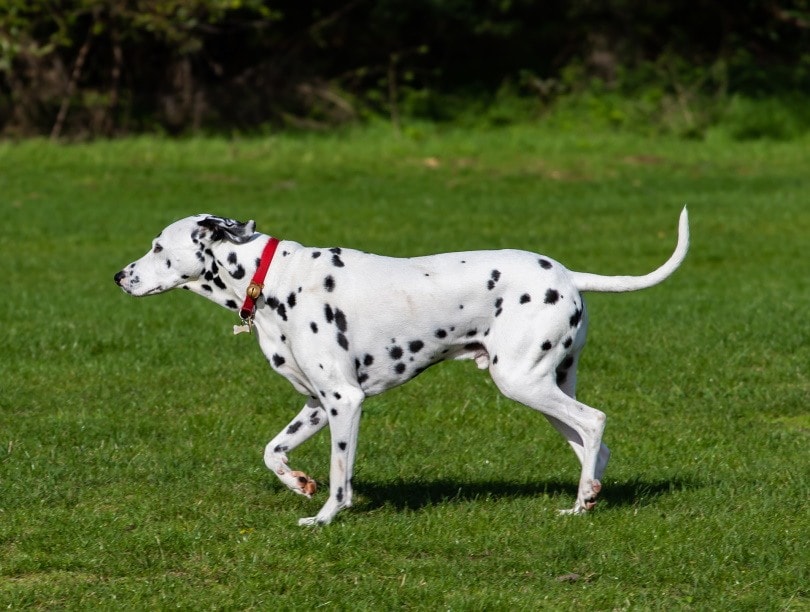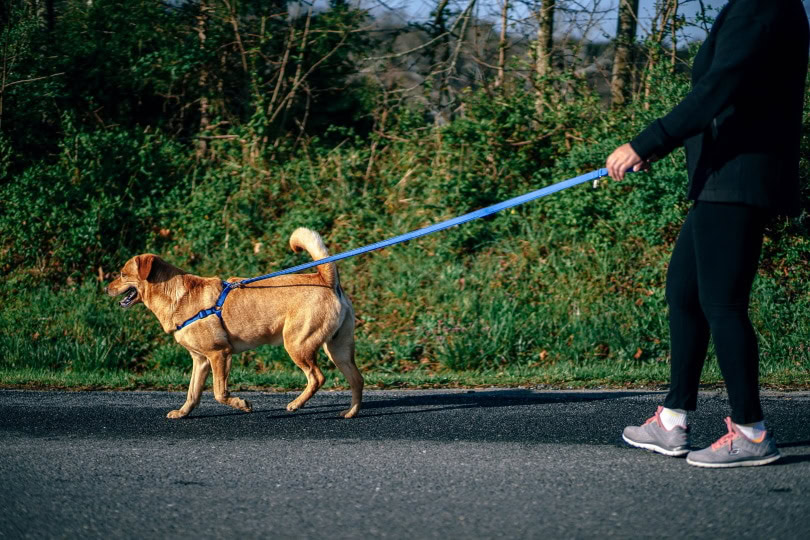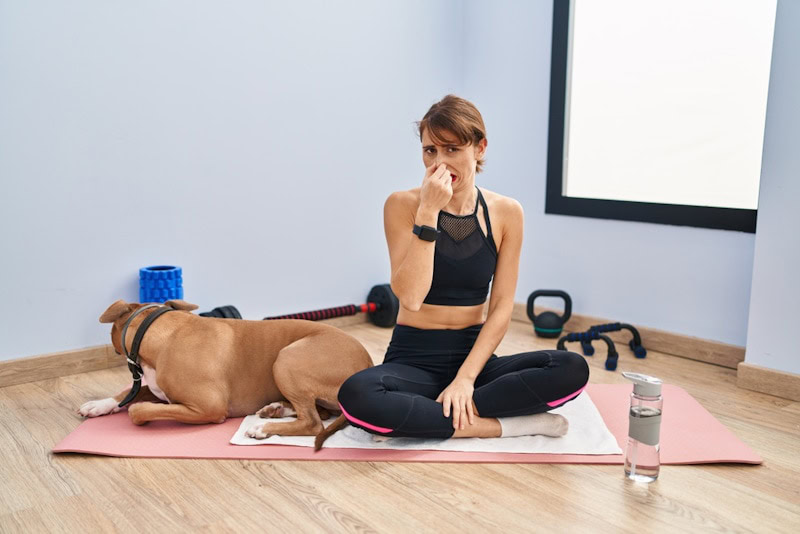VET APPROVED

The information is current and up-to-date in accordance with the latest veterinarian research.
Learn more »Click to Skip Ahead
It can be easy to assume that dogs are protected from sunburn by their fur, but that isn’t always the case. Some dogs are particularly sensitive to sun damage during sunny days, and you should take some steps to protect them, as you would protect your skin. Dog-friendly sunscreen and other precautionary measures are the best ways to keep your puppy safe in the sun.

Do All Dogs Get Sunburnt?
Some dogs are more prone to sunburn than others but they’re all at risk when it comes to the potential damage that the sun can cause. Generally, dogs with light-colored, thin, or no fur are the most likely to get sunburn. These breeds include but aren’t limited to:
- White Boxers
- Dalmatians
- Beagles
- Bull terriers
- American Staffordshire terriers
You should pay attention to your long-haired dog too. Not only are they likely to have more trouble staying cool during hotter days, but their thick coat also won’t protect all their skin. The areas around their belly, ears, eyes, nose, and mouths and the tip of their tail can all get sunburned if you’re not careful.
Overexposure to the sun can lead to solar dermatosis, which can predispose dogs to skin cancer. Based on the location of the lesions, there are two main categories of solar dermatosis in dogs: nasal and truncal solar dermatosis. These can affect the nose and nearby skin and the abdomen, inner thighs, flanks, tail tip, or paws.

What Sunscreen Should You Use on Your Dog?
Like most things when it comes to taking care of a dog, there are right and wrong ways to do so. Not all sunscreen options available are safe for pets and might even cause vomiting, diarrhea, or, less commonly, stomach ulcers if your dog eats or licks it off their skin.
Usually, the safest option is a sunscreen that’s designed for dogs. A few of the ingredients can still potentially cause problems if your dog eats it, though. Salicylates and zinc oxide should be avoided. Zinc oxide in particular can cause damage to red blood cells if your dog develops zinc toxicity by repeated exposure. Sunscreen might also irritate your dog’s skin if they’re sensitive to any of the ingredients.
If you do find a pet-friendly sunscreen, you should still check the ingredients. For the best results, look for a waterproof, SPF-30, unscented option. Remember to test the sunscreen on a small area of your dog’s skin to check for a reaction before you use it all over their body.
Human sunscreen should be avoided. Since they’re not designed for dogs, human sunscreens are more likely to contain toxic ingredients. Keep your human sunscreen far out of your dog’s reach, even while you’re out on a day trip.

How to Treat Your Dog’s Sunburn
Dogs don’t tend to burn as easily as we do, but it’s still important to recognize the signs on the skin so you can take steps to treat them. Sunburn in dogs can present as:
- Pink or red skin
- Blisters
- Crusting
- Ulceration
- Dry or cracking skin
- Hair loss
- Tenderness
- Scaly skin
Severe sunburn can be very painful for dogs. First, consult your veterinarian to determine how severe the burn is and what steps you need to take to treat it. Depending on the severity of your dog’s sunburn, treatment usually involves antibiotics, pain medication, wound cleansing treatment, or topical ointments.

Alternative Ways to Protect Your Dog From the Heat and Sun
Sunscreen can protect your dog’s skin, but it won’t stop your dog from getting too hot or dehydrated during summer. It also won’t prevent them from getting sunburn if they’re outside for longer than the protection lasts.
To keep your dog as safe as possible during long days outside, you need to take precautions that involve more than just covering them with sunscreen. These additional measures should always be implemented in hot, sunny weather.
1. Avoid the Hottest Hours
The hottest part of the day can vary depending on where you live, but it’s typically between 8 a.m. and 8 p.m. You should take precautions all day during sunny weather, but during these hours, it’s much easier to suffer from heat-related problems such as heat stroke and sunburn if you’re not careful — that goes for your dog, too.
Since your dog has no way of telling you when they’re too hot — they might just lie in a sunny spot all day if they’re allowed — it’s up to you to draw the line. For example, keep your dog inside during the hottest parts of the day.
If you do have to take them outside for a potty break, don’t spend too long outdoors, and try to stick to shady areas.

2. Protective Clothing
Another option is protective clothing that will protect your dog’s sensitive skin from the sun. If your dog is used to wearing clothes, UV-blocking dog clothes are available. Dogs with short fur or no fur at all can benefit from protective clothing the most.
These clothes are usually simple shirts or bodysuits that are designed to negate the effects of UV rays. You can also get hats or goggles for dogs with sensitive eyes. The downside is that protective clothing won’t protect every inch of your dog’s skin. You’ll still need to protect any exposed skin.
3. Provide Water
Sunburn isn’t the only risk when it comes to summer; there’s also heatstroke and dehydration to consider. Your dog should always have access to plenty of fresh water, but it’s even more important that you keep their water bowl topped up on hot days.
By keeping their water bowl filled and close at hand, you’ll encourage your dog to drink more during the day. This will keep their hydration levels up and lower the risk of them developing heatstroke.

4. Sit in the Shade
It’s nice to feel the sun on your skin once in a while, but you should be cautious about how much time you and your dog are spending in the sunlight. If you’re spending the day at the beach or an outdoor market, break up your day with regular stops in shady spots. You’ll still be outside, but at least not in direct sunlight.

Conclusion
No matter what breed they are or if they have fur or not, all dogs are susceptible to developing sunburn if they’re not protected well enough. However, if your dog is white, light-colored, or has exposed skin on the nose or trunk, you should be especially careful. To keep them safe, you can use pet-friendly sunscreen to prevent sunburn.
Sunscreen isn’t the only precaution that you should take during summer, though. Avoid the hottest hours, keep plenty of water nearby, and break up long days in the sun with regular rests in the shade or indoors.
Featured Image Credit: Olesya Kuprina, Shutterstock












